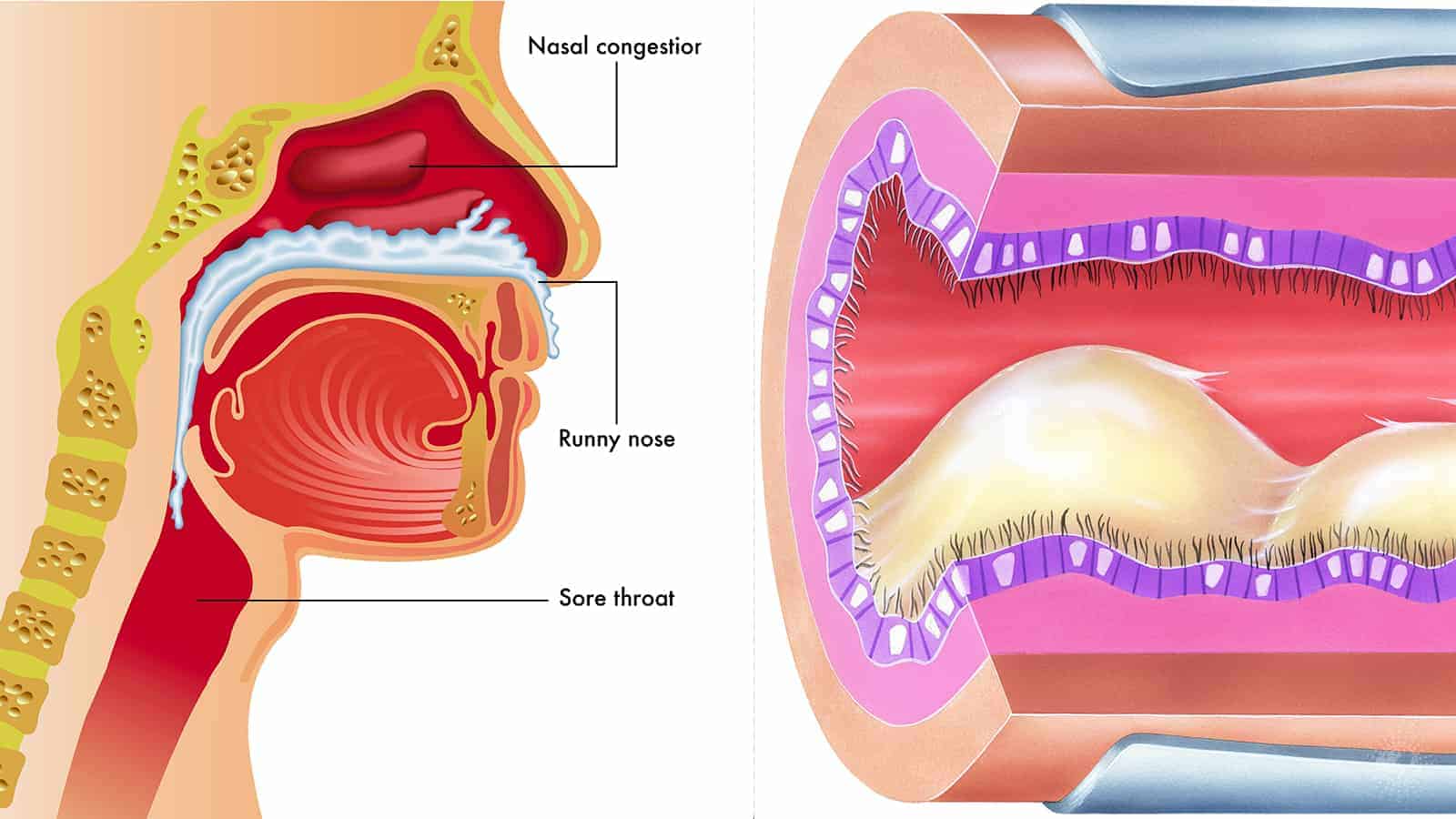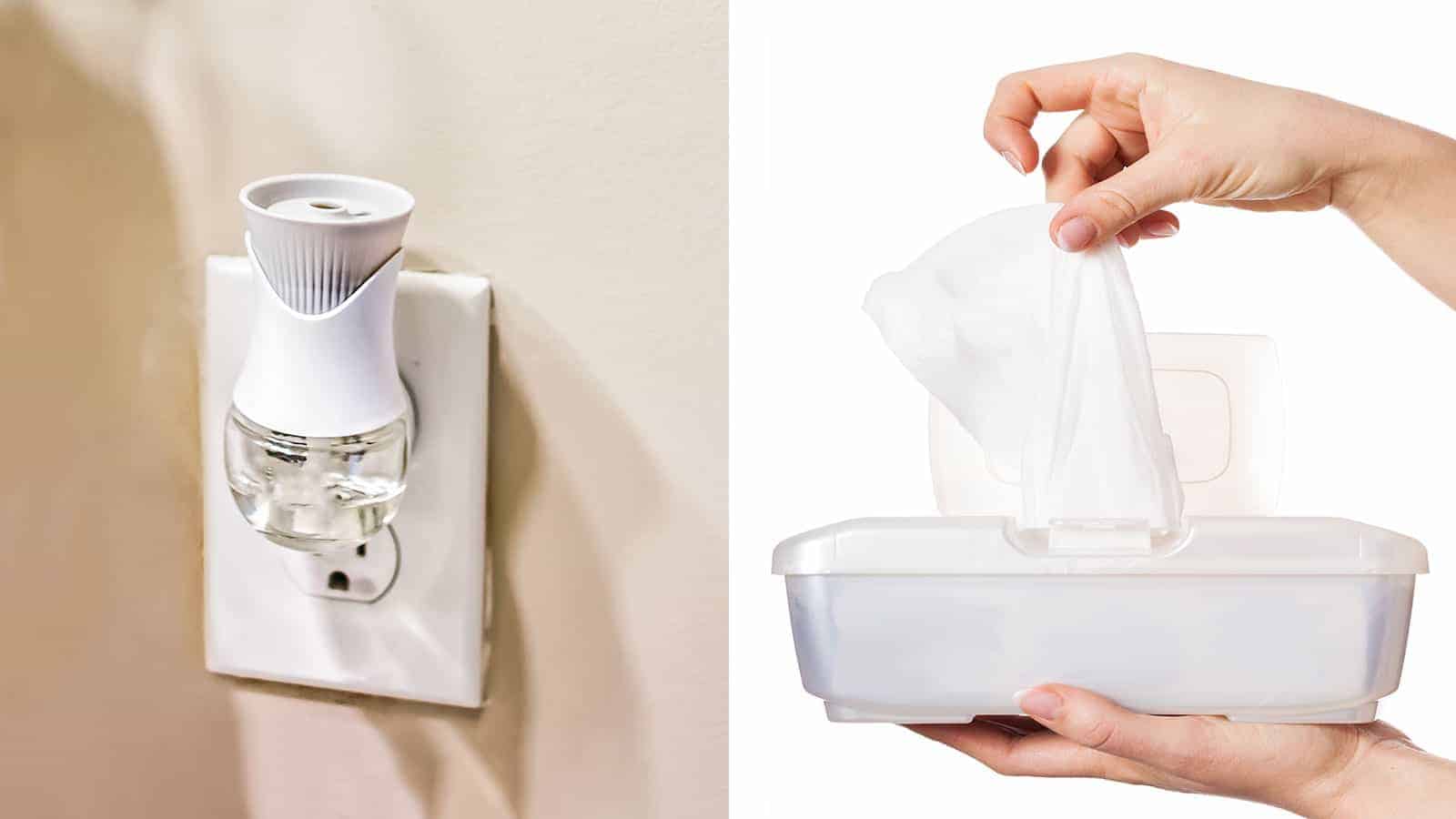Finding a natural way to ease the symptoms of chest and nasal congestion can be difficult. It’s not impossible, however, and many options discussed below can help eliminate mucus.
Finding another option is essential when you don’t want to take medication for congestion. The only other option is to be miserable, uncomfortable, and likely unable to sleep. You have to beat the phlegm buildup to feel better and function.
Most of these all-natural remedies contain ingredients you already have in your home. This information will help when you are desperate and too uncomfortable to make a trip to the store.
Note: Complementary medicine, like these home remedies, is not a replacement for proper medical care. If your congestion does not resolve itself within two or three days, or symptoms worsen, seek medical treatment.
15 Ways to Beat Chest and Nasal Congestion Without Medicine
Since you can’t go on feeling so uncomfortable and ill, it might be worth trying these things to relieve the discomfort.
1. Use a Humidifier to Thin the Mucus Causing the Congestion
When you use a humidifier, it fills the air with water vapor. This steam moisturizes your nose and throat, which helps alleviate chest and nasal mucus buildup.
When your nose and throat are unordinary dry, your body creates more mucus, and it’ll be thicker than usual. By finding a way to soothe the dryness, your body will stop producing that excessive and uncomfortable coating.
2. Stay Hydrated
Drinking plenty of water when you aren’t feeling well will help loosen and break up some of the phlegm. When you become dehydrated, the phlegm buildup will only get thicker and more uncomfortable.
Avoid caffeinated beverages such as coffee and soda, and avoid alcoholic drinks, as well. They contribute to dehydration. If you stick to only water, you’ll feel relief much sooner.
3. Get Some Exercise (for Nasal Congestion)
Going for a brisk walk, a jog, or a bike ride can help clear some of thenasal phlegm. It helps loosen the chest buildup and will allow you a little relief.
Remember not to overdo it, though, as you are likely fighting off some illness. Mayo Clinic suggests that exercise may provide you with temporary relief of nasal congestion. They suggest it is generally safe for nasal congestion, sneezing, runny nose, mild sore throat, and other “above the neck” symptoms.
Reduce your usual exercise intensity. Get enough exercise to help you feel better, then get enough rest.
Do not exert your body with chest congestion.
4. Use Essential Oils to Beat Congestion
These oils can treat and ease the symptoms of many illnesses, including a chest cold. Breathing in vapors from the oils can help break up and drain some of the phlegm. You can easily make homemade vapor rub by using a few popular essential oils.
To make a homemade, all-natural vapor rub, you should mix two drops of each of the following essential oils:
- Oregano
- Thyme
- Frankincense
- Eucalyptus
- Peppermint
If you don’t have all the listed essential oils, use the ones you do have. It will still be helpful, even if you don’t include them all. Once you’ve gathered your oils, you can combine them and create a homemade vapor rub.
You will put equal amounts of each essential oil into a glass bowl for adults. Dilute the oils with 1/4 cup of your favorite carrier oil: sunflower or jojoba oils are effective and affordable options.
Make sure to test the oils on a small skin spot if you’ve never applied essential oils before. You should not skip the patch test, because some people have more sensitive skin than others. If your skin begins to feel uncomfortable or becomes irritated, you should dilute the oil mixture before applying more.
Remember to always check with your doctor before using essential oils.
If You Don’t Want to Apply the Essential Oil Mixture to Your Skin
There are other options for those with sensitive skin or who aren’t comfortable using essential oils on their skin. You can diffuse the oils instead or put them in steaming water and breathe in the vapors.
5. Try a Deep Cough Technique
A deep cough can help clear the airway and break up phlegm in your chest. St. Luke’s Health Center explains how to do this safely:
Deep coughing is a therapeutic practice that aids in clearing the lungs, enhances breathing, and reduces the risk of lung infections. The procedure involves the following steps:
- Sit on the edge of a bed or in a chair. Hold a pillow tight against the incision area if you have had recent surgery.
- Breathe slowly and deeply in through the nose, then fully out through the mouth, repeating twice. On the third cycle, fill your lungs with as much air as possible.
- Coughing two to three times consecutively, aiming to expel all the air from your lungs. If mucus produces, spit it into a tissue – don’t swallow it.
- Lastly, return to normal breathing and repeat these steps as needed.
The St. Luke’s resource guide emphasizes hand hygiene after deep coughing with soap and running water for 20 seconds.
6. Practice a Huff Cough
Another coughing technique to clear chest congestion. The Cystic Fibrosis Foundation recommends the Huff Cough for clearing the larger airways of mucus. Here’s how to do it:
The Huff Coughing Technique, also known as Huffing, is a method that facilitates the removal of mucus from the lungs. This approach is more effective and less strenuous than a typical cough and works in conjunction with other Airway Clearance Techniques (ACTs). Huffing can be compared to the action of breathing onto a mirror to create steam.
Here’s how to perform the Huff Coughing Technique:
- Sit upright with a slight upward tilt of the chin and an open mouth.
- Inhale slowly until the lungs are about three-quarters full.
- Pause your breath for two to three seconds.
- Exhale with force, yet slowly, in a continuous breath to shift the mucus from the smaller airways to the larger ones.
- Repeat this process twice, followed by a robust cough to clear the mucus from the larger airways.
- Perform a cycle of four to five huff coughs as a part of your airway clearance routine.
Severe chest congestion often indicates something very wrong – seek medical treatment if this does not provide relief.
7. Drink Warm Beverages
As mentioned before, staying hydrated helps you feel better.
Drinking hot beverages can provide short-term relief (about an hour) for nasal congestion. The warm liquid offers lasting comfort for phlegm buildup, sneezing, coughing, sore throats, and chills.
Options for warm beverages include broths, decaffeinated tea, and warm water.
8. Inhale Steam to Loosen Chest and Nasal Congestion
Moist air can help loosen the chest and nasal buildup quickly. You can inhale steam by filling a large bowl with hot water and leaning over the pan.
You will want to drape a towel over your head as you lean forward to trap the steam inside. This posture allows you to breathe more of it before the water cools too much. As you lean forward over the steam, gently inhale and continue breathing over the steam until the water cools.
9. Take a Hot Shower or Bath
While the hot water runs, allow the steam it produces to fill the bathroom. Breathing in this steam will help break up the buildup. Plus, the hot shower or bath will help you feel better overall. Just make sure to drink quite a bit of water afterward so you don’t become dehydrated.
You can also flick a few drops of eucalyptus essential oil onto the shower walls and let the steam loosen the congestion. Right after you shower, blow your nose or try deep coughing to try to release the loosened mucus.
10. Gargle With Some Saltwater
Mix salt with warm water and rinse to reduce the amount of phlegm buildup in your throat and alleviate symptoms. Add around half a teaspoon of salt to one cup of warm water, and then stir until the salt dissolves.
After you gargle the saltwater, keep your head tipped back and allow the mixture to sit there for a minute. This action further helps with the breakup of phlegm in your throat and chest. You can do this as often as needed because it is entirely safe and includes no medication.
11. Use Honey
Honey can help ease phlegm buildup symptoms and has antiviral and antibacterial properties.
You can add honey to warm water or decaf tea to help soothe your throat and chest. Do this every three to four hours or as needed until the symptoms are gone.
12. Prop Yourself Up
If you elevate your head, you will likely find relief from your symptoms. Grab some extra pillows and prop them behind yourself. This propping will help drain the buildup instead of dripping down your throat. You will release the irritants and therefore ease coughing.
13. Drink Apple Cider Vinegar
While this may sound gross, it’s a time-honored way to ease your chest and nasal passage buildup. Add about one teaspoon to a glass of warm or lukewarm water and then swig it. This will help with the symptoms and offer lasting relief.
Pacific College wrote a 2015 article suggesting that apple cider vinegar (ACV) can alleviate allergies and sinus conditions by breaking up mucus in the body and relieving chronic sinusitis and allergy symptoms.
Harvard Health also acknowledges how a small study that found apple cider vinegar eased symptoms in sinus sufferers and suggests it can reduce the risk of sinus infections.
Please note that while these sources suggest that apple cider vinegar may help with symptoms related to chest and nasal passage buildup, the evidence is largely anecdotal, and more research is needed to understand the potential benefits and risks fully. Still, it might be worth a try if you feel miserable.
14. Drink Hot Lemon Water or Tea
Lemons can help eliminate the uncomfortable phlegm buildup you are experiencing. The lemon water will help hydrate you while the citrus clears your chest and nasal passages. Lemons also contain Vitamin C, boosting your immune system, so it fights the virus that makes you feel so bad.
To make this drink, cut a lemon in half and squeeze one-half of the lemon into the hot beverage. Once you’ve got all the juice from half of the lemon, stir it together. You can also add a teaspoon of honey to give it more flavor and to help ease the symptoms even more.
15. Consume Ginger
Add a small amount of ginger to your hot water to help ease your uncomfortable symptoms. You can add a little pepper and honey to the water for more relief. Another option is to add some ground cloves and cinnamon to the ginger water.
When It’s Time to Seek Medical Treatment for Your Congestion
While mild nasal or chest congestion can often be managed at home with rest and these comforting techniques, seeking medical attention is essential. You should contact a healthcare provider if you or a loved one experiences:
- Severe chest congestion or chest pain.
- Difficulty breathing or shortness of breath.
- Congestion or cough that persists for more than a week.
- High fever (over 101°F or 38.3°C).
- Symptoms that initially improve but then worsen.
- Wheezing or other unusual sounds when breathing.
- Coughing up blood or yellow or green phlegm.
Persistent or recurrent vomiting. - If you have comorbidities that make you more likely to have complications.
- Signs of dehydration include not urinating, dry mouth, or not producing tears when crying.
- In infants, poor feeding, irritability, or lethargy.
These symptoms could indicate a more serious condition, such as pneumonia, bronchitis, or another type of respiratory infection, which may require medical treatment. Always consult with a healthcare provider if you’re unsure about your symptoms or if your condition worsens.
Final Thoughts on Using These Remedies to Beat Chest and Nasal Congestion Without Medicine
Chest and nasal congestion are incredibly uncomfortable and can make performing even the most mundane tasks challenging. If you have enough mucus buildup, you may not even be able to sleep.
As you have discovered, there are ways to ease these symptoms without taking medication. With all of these all-natural remedies, you should find something that provides comfort. You can use multiple methods at once, further ensuring the comfort that is soon to follow.
Don’t spend time feeling terrible and like you can’t breathe or stop coughing. Instead, try some of these ways to beat chest and nasal congestion without medicine.


















 Community
Community

